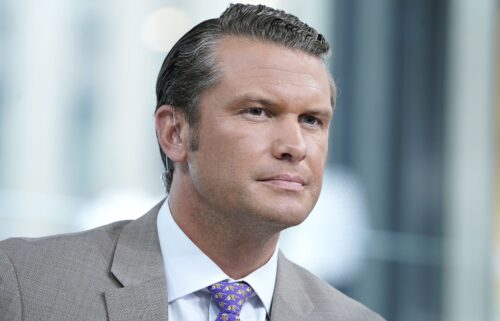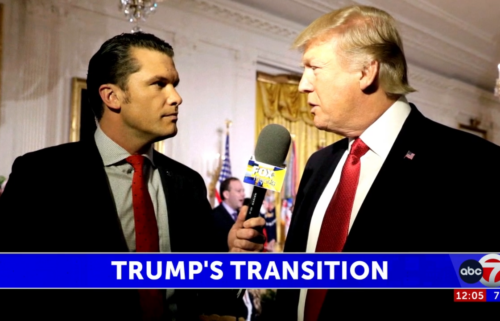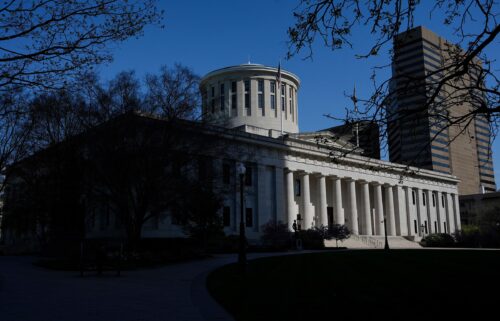Newsom proposes giving two of every three California residents $600 as recall campaign heats up
California’s Democratic Gov. Gavin Newsom, facing a Republican-led recall, said Monday he wants to return the state’s enormous $75.7 billion budget surplus to the pockets of taxpayers via an expanded stimulus check program he says would benefit two out of every three residents.
The $12 billion proposal would amount to the largest year-over-year rebate that’s ever been provided in any state in American history, Newsom said. It’s part of his larger $100 billion “California Comeback Plan” that would also include rental assistance and direct relief to help Californians pay off water, gas and electricity bills.
The governor said that the program is possible because the state has a $75.7 billion budget surplus, noting that at this time last year he had announced a $54.3 billion projected shortfall.
“It’s a remarkable turnaround,” Newsom said at a press conference. “I made the point at the state of the state (address) a number of months ago: California is now coming back. California is going to come roaring back.”
If the plan gets approved by the Democratic-controlled state legislature, it would send $600 stimulus checks to residents earning up to $75,000 who didn’t receive an earlier payment from the state. Families could be eligible for an additional $500. Money already went out in April to Californians earning up to $30,000.
Newsom stressed that he will need the cooperation of the state legislature to proceed with his plan, but noted that two of the budget chairs were present at the press conference
“I’m by no means naive about the deliberative process … but I’m mindful that our values are aligned,” he said.
Newsom was asked whether this is a deliberate strategy to generate good publicity given the recall election. Side-stepping that question, he said he is “really proud of California’s resilience” and “California’s remarkable capacity, not only to come back, but to come roaring back.”
The California secretary of state confirmed in late April that proponents of the Republican-led effort to recall Newsom had gathered the more than 1.4 million valid signatures that were needed to initiate the recall. But state officials have yet to officially call or schedule the election because there are still a number of bureaucratic steps that must be completed.
The recall has been fueled by anger over the restrictions the governor put in place to curb the spread of Covid throughout last year and during an alarming surge in cases during the winter holiday months. California has been one of the slowest states to get children back to school.
Only 4 in 10 likely voters said they would vote to recall Newsom in a recent poll by the Public Policy Institute of California. His approval ratings are stable at above 50%, and his allies hope his political standing will improve as Covid cases continue to drop and he steers the state toward a full reopening by June 15.
The state-funded stimulus checks would add to the three rounds of federal stimulus payments that were delivered over the past year to millions of Californians. The most recent round, which was approved by Congress in March, sent more than 160 million payments to households across the country that were worth up to $1,400 per person. An estimated 8.8 million Californians were eligible.
The full amount went to individuals who earn less than $75,000 a year and married couples earning less than $150,000. But then the payments gradually phased out as income goes up. Individuals who earn at least $80,000 a year and married couples who earn at least $160,000 were completely cut off.
California swimming in funds
The budget surplus is the result of a booming stock market and the rapid but uneven economic recovery, which is translating into big capital-gains tax revenue from wealthy California residents.
The state is also set to receive more than $27 billion in federal aid, the US Treasury Department announced Monday. It is part of the $350 billion Coronavirus State and Local Fiscal Recovery Funds program, which was created by the Democrats’ $1.9 trillion rescue package in March to address pandemic-fueled revenue losses and increased expenses. The money can also be used to assist struggling residents and businesses.
Asked about states with large surpluses receiving the rescue funds, a senior administration official said they could use it to help those in need and for more “transformative” improvements.
“These are still areas where there is a lot of hurting,” the official said, noting the large number of homeless residents in the Los Angeles area. “It’s not just about a strong recovery, it’s about a more equitable recovery as well.”
Newsom announced last month that small businesses hit hardest by the pandemic will receive a $6.2 billion tax cut over the next six years. Under the legislation he signed, Paycheck Protection Program loans that businesses received from the federal government during the pandemic that were forgiven will not be counted as taxable income, and these businesses can also deduct the costs of expenses that those loans paid for.
The Golden State also enjoyed a multibillion-dollar budget surplus in 2013, after years of major shortfalls in the wake of the Great Recession. Then-Gov. Jerry Brown sought to use it to increase funding for education, pay down debt and set aside money in a reserve fund.
This story has been updated with more details on California’s finances.




